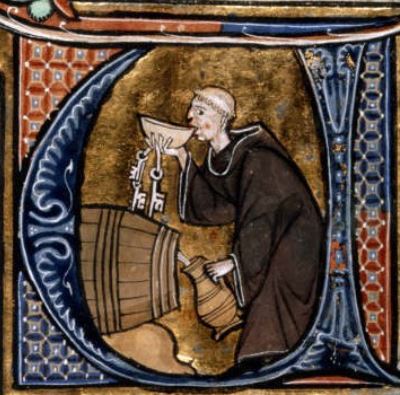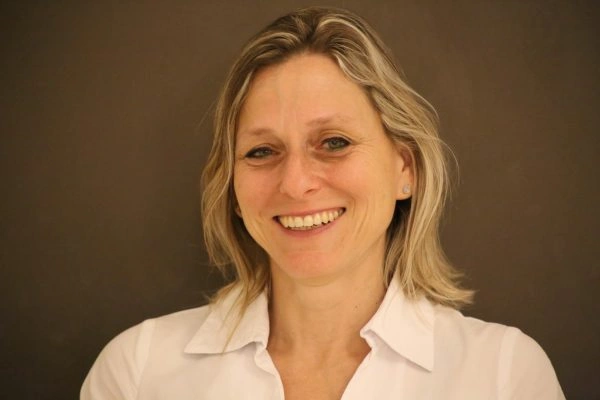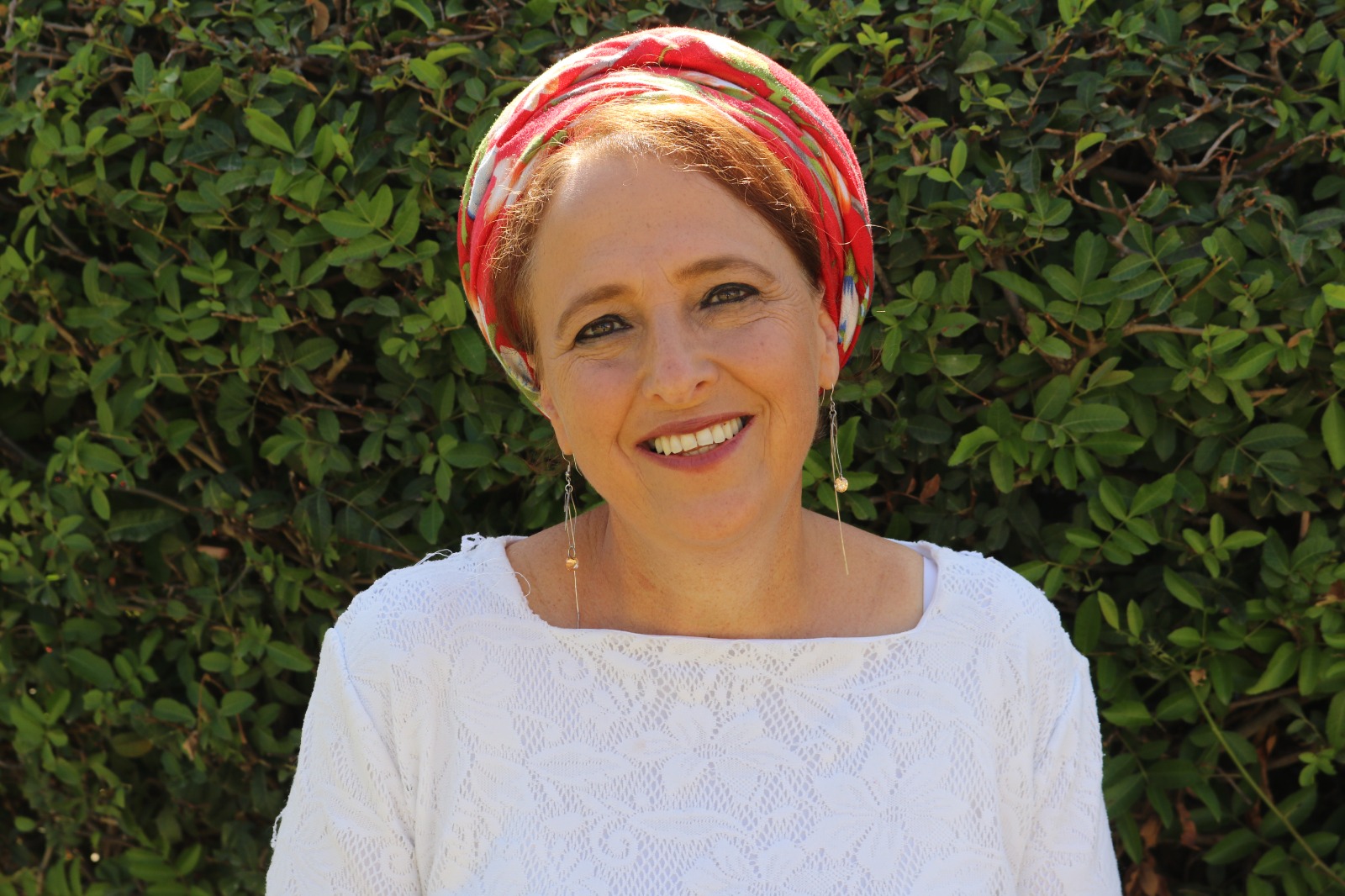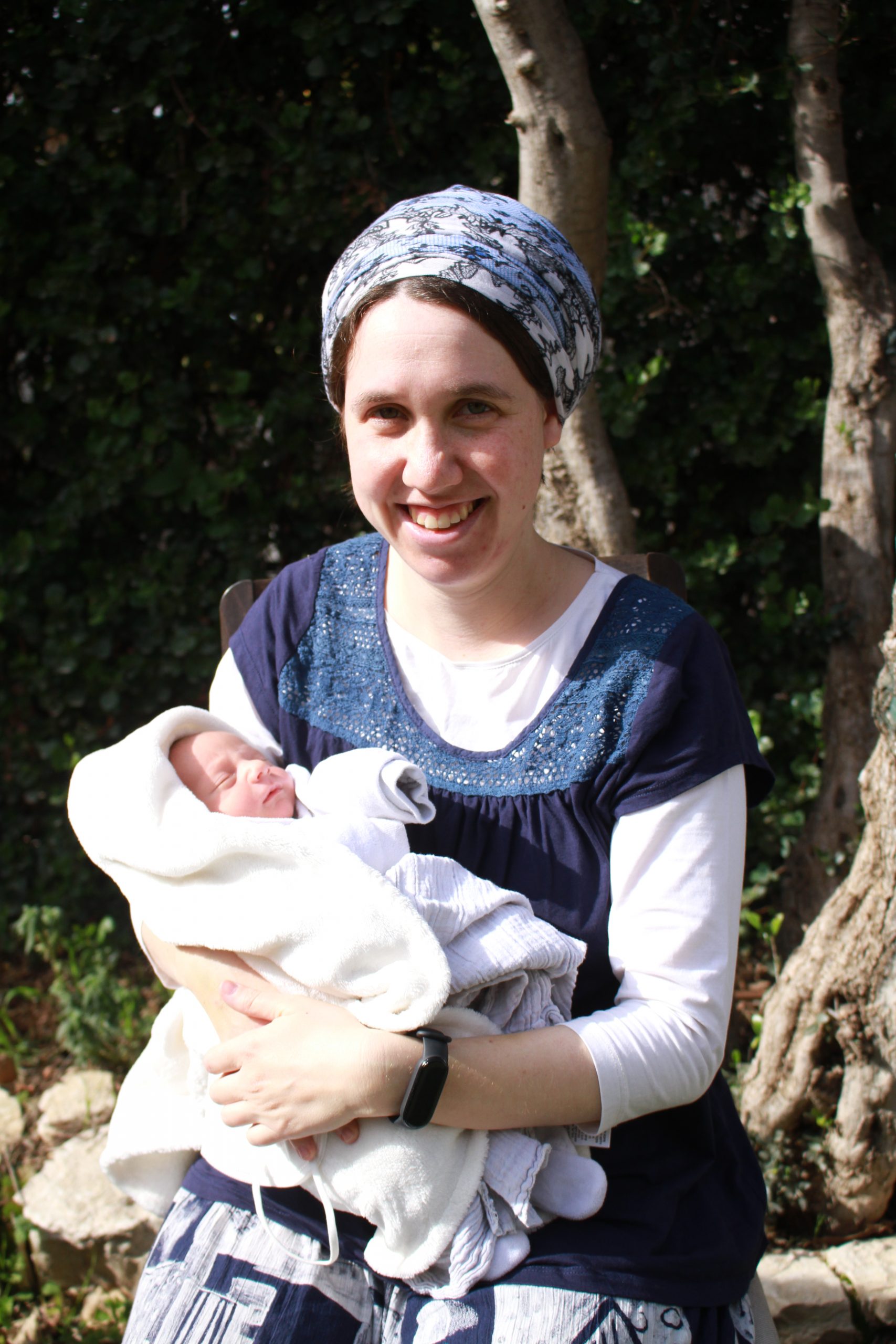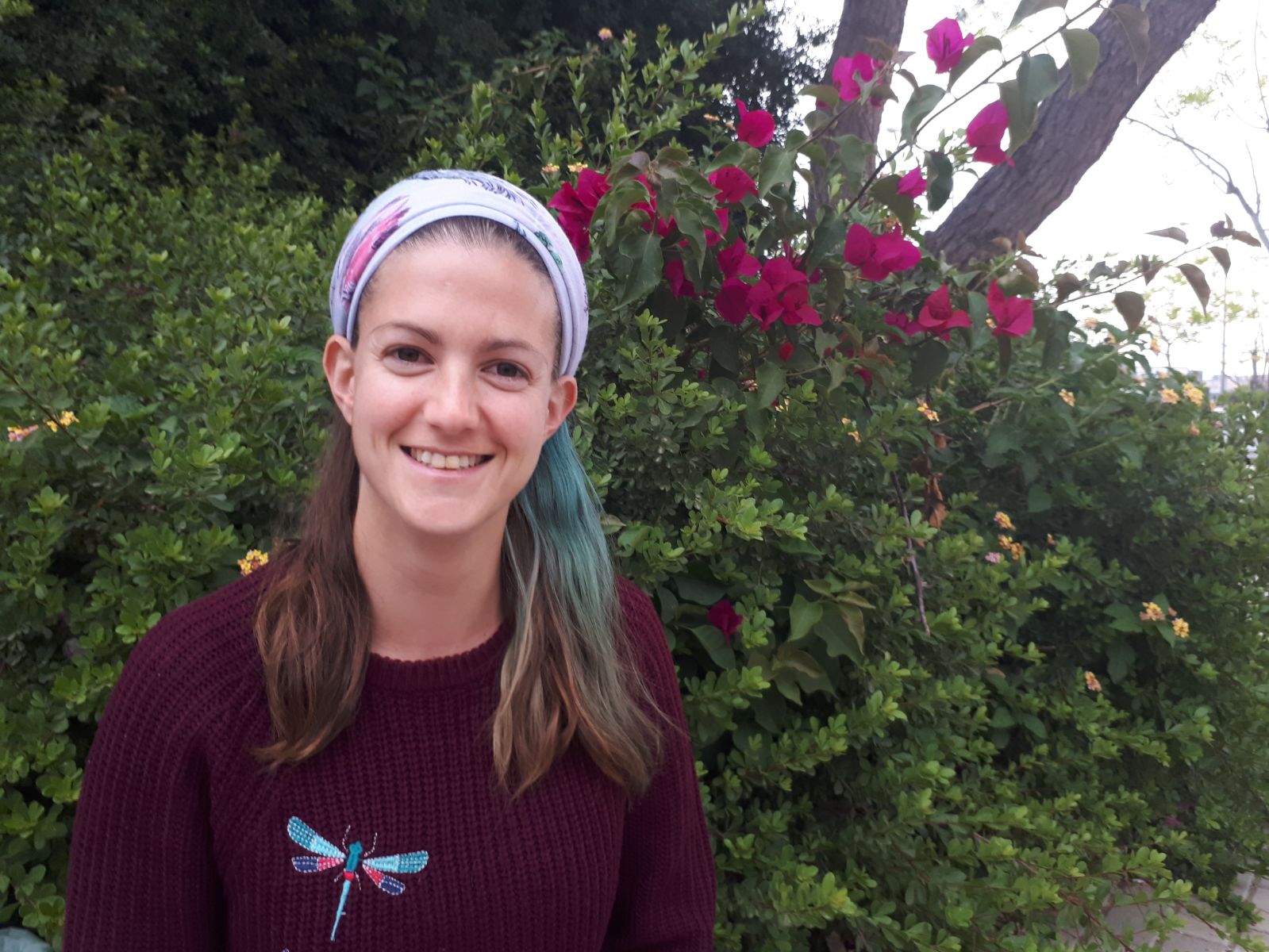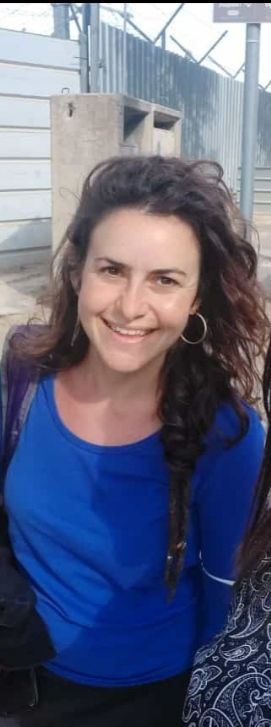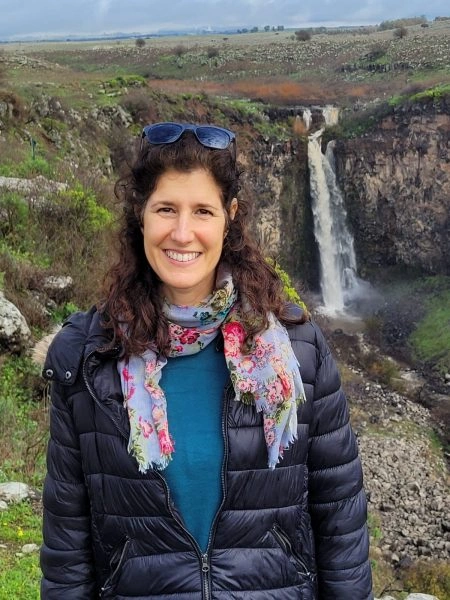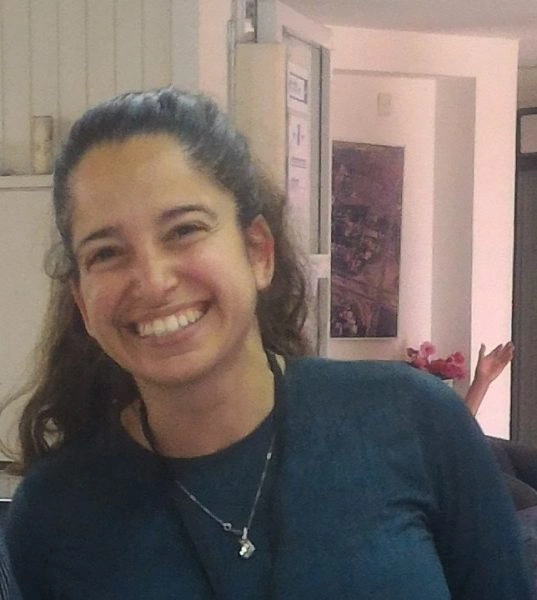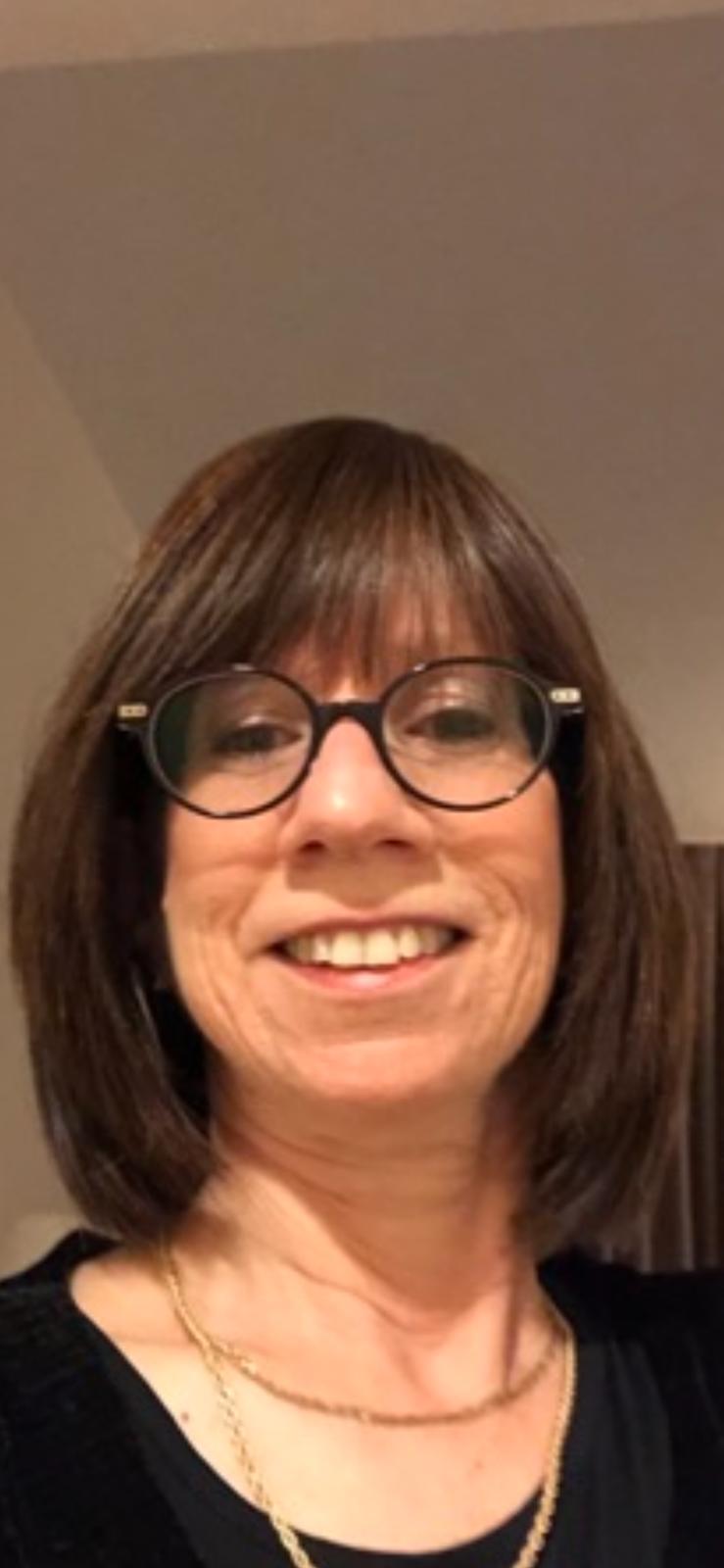האם ניתן להשתמש במטבעות שפחת ערכם? באיזה אחוז זה ייחשב לאונאה ואפשר לדרוש בחזרה את הסכום שנתאנה בו בגלל פחיתת ערך המטבע? יש מחלוקת בין רבי מאיר, רבי יהודה ורבי שמעון. מדוע זה שונה מאונאת בבגדים שם אין מחלוקת? כשמטבע פחת ליותר ממחצית ערכו, יש להשמיד את המטבע. מדוע? יש מחלוקת אם צריך להשמיד את המטבע מפחת של אחוז אונאה ועד למחצית ערכו או רק כשפחת יותר ממחצית ערכו. שתי קושיות מועלות נגד רב הונא שהחזיק באפשרות הראשונה. מהו פרק הזמן שהוקצב להחזר הכסף שנפחת ערכו? האם הוא זהה לזמן שהוקצב להחזיר חפצי אונאה? המשנה מזכירה חריג לכלל – מקרה שבו ניתן להחזיר אף אחרי יותר משנה. כיצד מבין רב חסדא מקרה זה?
רוצים להקדיש למידה? התחל כאן:
העמקה
רוצה להבין מה באמת קורה מתחת לפני השטח של הסוגיה?
שיעורים, פודקאסטים והרחבות של מיטב המורות שלנו יפתחו לך עוד זוויות וכיווני חשיבה.
חדשה בלימוד הגמרא?
זה הדף הראשון שלך? איזו התרגשות עצומה! יש לנו בדיוק את התכנים והכלים שיעזרו לך לעשות את הצעדים הראשונים ללמידה בקצב וברמה שלך, כך תוכלי להרגיש בנוח גם בתוך הסוגיות המורכבות ומאתגרות.
פסיפס הלומדות שלנו
גלי את קהילת הלומדות שלנו, מגוון נשים, רקעים וסיפורים. כולן חלק מתנועה ומסע מרגש ועוצמתי.
בבא מציעא נב
שְׁמוֹנָה פּוּנְדְּיוֹנוֹת, שְׁנֵי פּוּנְדְּיוֹנוֹת לְדִינָר.
The accepted depreciation is eight pundeyon, which is a rate of two pundeyon per dinar, or one-sixth of a dinar.
עַד מָתַי מוּתָּר לְהַחְזִיר? בִּכְרַכִּים – עַד כְּדֵי שֶׁיַּרְאֶה לַשּׁוּלְחָנִי, בִּכְפָרִים – עַד עַרְבֵי שַׁבָּתוֹת. אִם הָיָה מַכִּירָהּ – אֲפִילּוּ לְאַחַר שְׁנֵים עָשָׂר חֹדֶשׁ מְקַבְּלָהּ הֵימֶנּוּ, וְאֵין לוֹ עָלָיו אֶלָּא תַּרְעוֹמֶת.
The mishna continues: Until when is it permitted for one to return a worn coin once he realizes that it is defective? In the cities [bakerakim], one may return it only until a period of time has passed that would allow him to show it to a money changer, who is an expert in matters of coins. In the villages, where there is no money changer, one may return it only until Shabbat eves, when people purchase their Shabbat needs. Although these are the limits of how much a coin must be eroded in order for there to be exploitation, if the one who gave the coin to the aggrieved party recognized it, he must accept it back from him even after twelve months have passed no matter how little the erosion affected its value. And he has only a grievance against him, as the Gemara will explain.
וְנוֹתְנָהּ לְמַעֲשֵׂר שֵׁנִי וְאֵינוֹ חוֹשֵׁשׁ, שֶׁאֵינוֹ אֶלָּא נֶפֶשׁ רָעָה.
And one may give the slightly eroded coin for use in the desacralizing of second-tithe produce and he need not be concerned, as one who would refuse to accept a slightly eroded coin is merely a miserly soul, while the coin is in fact valid for any use.
גְּמָ׳ וּרְמִינְהִי: עַד כַּמָּה תְּהֵא הַסֶּלַע חֲסֵירָה וְיִהְיֶה בָּהּ אוֹנָאָה?
GEMARA: And the Gemara raises a contradiction to the mishna from a baraita in which the same measures of depreciation are enumerated, as in that baraita those measures are introduced with the question: How much must the sela coin be eroded so that its use in a transaction at its original value will constitute exploitation? That is diametrically opposed to the mishna.
אָמַר רַב פָּפָּא, לָא קַשְׁיָא: תַּנָּא דִּידַן קָא חָשֵׁיב מִמַּטָּה לְמַעְלָה, תַּנָּא בָּרָא קָא חָשֵׁיב מִלְּמַעְלָה לְמַטָּה.
Rav Pappa says: This is not difficult. The tanna of our mishna calculates the measures from low to high. The tanna says that it does not constitute exploitation up to, but not including, the levels of depreciation enumerated in the mishna. Beginning with those levels of depreciation, it is exploitation. And the external tanna, i.e., the tanna of the baraita, calculates from high to low. That tanna says that it is exploitation down to and including the levels of depreciation enumerated in the baraita. It is only beneath those levels that it is not considered exploitation. There is no halakhic dispute between the two tanna’im.
מַאי שְׁנָא בְּסֶלַע דִּפְלִיגִי, וּמַאי שְׁנָא בְּטַלִּית דְּלָא פְּלִיגִי?
The Gemara returns to discuss the mishna and asks: What is different with regard to a sela, that the tanna’im disagree about the level of depreciation that constitutes exploitation, and what is different with regard to a garment, that the tanna’im do not disagree concerning whether the disparity between value and price that constitutes exploitation is one-sixth or less than one-sixth?
אָמַר רָבָא: מַאן תְּנָא טַלִּית – רַבִּי שִׁמְעוֹן הִיא. אַבָּיֵי אָמַר: טַלִּית – עַד שְׁתוּת מָחֵיל אִינִישׁ. דְּאָמְרִי אִינָשֵׁי: עֲשִׁיק לְגַבָּיךְ וְשָׁוֵי לִכְרֵסָיךְ. סֶלַע, כֵּיוָן דְּלָא סַגִּי לֵיהּ – לָא מָחֵיל.
Rava said: Who is the tanna that taught the halakhot of exploitation with regard to a garment in the mishnayot cited earlier in this chapter? It is Rabbi Shimon, who maintains that even in the case of a sela, the measure of exploitation is one-sixth. Abaye said that the two cases are different: With regard to a garment, a person is likely to waive the disparity up to one-sixth, as people say: Overpay and acquire an item for your back, i.e., a garment, and acquire at cost items for your stomach, i.e., food. Since it is worth purchasing fine garments, the disparity is not significant. By contrast, with regard to the sela in question, since it does not circulate, he does not waive even the sum of a smaller disparity.
גּוּפָא: עַד כַּמָּה תְּהֵא הַסֶּלַע חֲסֵירָה וִיהֵא בָּהּ אוֹנָאָה? רַבִּי מֵאִיר אוֹמֵר: אַרְבָּעָה אִיסָּרוֹת, אִיסָּר לְדִינָר. רַבִּי יְהוּדָה אוֹמֵר: אַרְבָּעָה פּוּנְדְּיוֹנוֹת, פּוּנְדְּיוֹן לְדִינָר. רַבִּי שִׁמְעוֹן אוֹמֵר: שְׁמוֹנָה פּוּנְדְּיוֹנוֹת, שְׁנֵי פּוּנְדְיוֹנִים לְדִינָר. יָתֵר עַל כֵּן – מוֹכְרָהּ בְּשׇׁוְיָהּ.
§ With regard to the matter of exploitation and coins itself, the Gemara elaborates: How much will the sela coin be eroded and its use in a transaction will constitute exploitation? Rabbi Meir says: Four issar, which is a rate of an issar per dinar. Rabbi Yehuda says: Four pundeyon, a pundeyon per dinar. Rabbi Shimon says: Eight pundeyon, two pundeyon per dinar. If the depreciation is greater than that, he may sell the coin at its value as metal, not for its original value.
עַד כַּמָּה תִּיפָּחֵת וִיהֵא רַשַּׁאי לְקַיְּימָהּ? בְּסֶלַע – עַד שֶׁקֶל. בְּדִינָר – עַד רוֹבַע. פָּחוֹת מִכֵּן אִיסָּר – אָסוּר לְהוֹצִיאָהּ. הֲרֵי זֶה לֹא יִמְכְּרֶנָּה לֹא לַתַּגָּר וְלֹא לְחָרָם וְלֹא לְהָרָג, מִפְּנֵי שֶׁמְּרַמִּין בָּהּ אֶת אֲחֵרִים. אֶלָּא יִקֳּבֶנָּה וְיִתְלֶנָּה בְּצַוַּאר בְּנוֹ אוֹ בְּצַוַּאר בִּתּוֹ.
To what extent can the coin erode and it will still be permitted for one to maintain it as a coin? With regard to a sela, it can be used as a sela until it erodes so that its value reaches one shekel, i.e., half a sela. With regard to a dinar, it can be used as a dinar until it erodes so that its value reaches one-quarter. Once it erodes to the point where its value reaches an issar less than that, it is prohibited to spend it. He may not sell the invalidated coin to a merchant, nor to a violent man, nor to a murderer, because they deceive others with it or force them to take it. Rather, he should perforate it and suspend it as an ornament on the neck of his son or the neck of his daughter.
אָמַר מָר: בְּסֶלַע עַד שֶׁקֶל, בְּדִינָר עַד רוֹבַע. מַאי שְׁנָא בְּסֶלַע עַד שֶׁקֶל, וּמַאי שְׁנָא בְּדִינָר עַד רוֹבַע?
The Gemara continues its analysis of the baraita. The Master said: With regard to a sela, it can be used as a sela until it erodes so that its value reaches one shekel, i.e., half a sela. With regard to a dinar, it can be used as a dinar until it erodes so that its value reaches one-quarter. The Gemara asks: What is different whereby with regard to a sela, it can be used as a sela until it erodes so that its value reaches one shekel, which is half a sela, and what is different whereby with regard to a dinar, it can be used as a dinar until it erodes so that its value reaches one-quarter [rova]?
אָמַר אַבָּיֵי: מַאי ״רוֹבַע״ דְּקָתָנֵי – נָמֵי רוֹבַע שֶׁקֶל. אָמַר רָבָא: דַּיְקָא נָמֵי, דְּקָא תָּנֵי ״רוֹבַע״, וְלָא קָתָנֵי ״רְבִיעַ״. שְׁמַע מִינַּהּ.
Abaye says: What is the meaning of rova that the baraita teaches? It too is referring to a coin called rova, which is worth one-quarter of a shekel, which is half a dinar. Rava said: The language of the baraita is also precise in this regard, as the tanna teaches rova and does not teach one-quarter [revia]. The Gemara concludes: Learn from that inference that the reference of the tanna of the baraita is to the coin called rova, which is half a dinar.
לְמָה לֵיהּ לְמִתְלְיֵיהּ לְדִינָר בְּשֶׁקֶל? מִלְּתָא אַגַּב אוֹרְחֵיהּ קָא מַשְׁמַע לַן, דְּאִיכָּא דִּינָר דְּאָתֵי מִשֶּׁקֶל.
The Gemara asks: Why does the tanna state his ruling so that the amount of erosion that disqualifies a dinar is dependent on a shekel? Why does the tanna state the measure as one-quarter of a shekel, rather than stating it as one-half of a dinar? The Gemara explains: By doing so, the tanna teaches us a matter in passing, that there are cases where a dinar originates from a shekel, e.g., a shekel that eroded and is now worth one-half its original value, i.e., one dinar.
מְסַיַּיע לֵיהּ לְרַבִּי אַמֵּי. דְּאָמַר רַבִּי אַמֵּי: דִּינָר הַבָּא מִשֶּׁקֶל – מוּתָּר לְקַיְּימוֹ. דִּינָר הַבָּא מִסֶּלַע – אָסוּר לְקַיְּימוֹ.
This supports the opinion of Rabbi Ami, as Rabbi Ami says: With regard to a dinar that originated from a shekel, it is permitted to maintain it and use it as a dinar. Based on its size and shape, there is no concern that people will confuse it with a shekel. With regard to a dinar that originated from a sela, it is prohibited to maintain it and use it as a dinar. Due to the fact that even after erosion the coin remains the size of a sela, which is clearly larger than a dinar, the concern is that people will mistakenly consider it more valuable than a dinar.
פָּחוֹת מִכֵּן אִיסָּר – אָסוּר לְהוֹצִיאָהּ. מַאי קָאָמַר? אָמַר אַבָּיֵי, הָכִי קָאָמַר: פָּחֲתָה סֶלַע יוֹתֵר מִכְּדֵי אוֹנָאָה אִיסָּר – אָסוּר. אֲמַר לֵיהּ רָבָא: אִי הָכִי – אֲפִילּוּ מַשֶּׁהוּ נָמֵי! אֶלָּא אָמַר רָבָא: פָּחֲתָה סֶלַע אִיסָּר לְדִינָר – אָסוּר, וּסְתָמָא כְּרַבִּי מֵאִיר.
§ The Gemara continues its analysis of the baraita, which teaches: Once it erodes to the point where its value reaches an issar less than that, it is prohibited to spend it. The Gemara asks: What is the tanna saying in that statement? Abaye said that this is what the tanna is saying: If a sela eroded by the amount of an issar greater than the measure of exploitation, it is prohibited to spend it at its original value. Rava said to Abaye: If so, then even any amount greater than the measure of exploitation should be forbidden as well. Rather, Rava said that this is what the tanna is saying: If a sela eroded by the amount of an issar per dinar, it is prohibited to spend it, and this unattributed baraita is in accordance with the opinion of Rabbi Meir, who says in the mishna that the measure of exploitation is one issar per dinar.
תְּנַן הָתָם: סֶלַע שֶׁנִּפְסְלָה וְהִתְקִינָהּ שֶׁיְּהֵא שׁוֹקֵל בָּהּ מִשְׁקָלוֹת – טְמֵאָה. עַד כַּמָּה תִּיפָּחֵת וִיהֵא רַשַּׁאי לְקַיְּימָהּ? (לַסֶּלַע) שְׁנֵי דִּינָרִים, פָּחוֹת מִכֵּן – יָקוֹץ.
We learned in a mishna there (Kelim 12:7): A sela that was invalidated for use as a coin, and an individual designated it so that he would weigh with it items that require weighing, is susceptible to becoming ritually impure. His designation rendered it a vessel like any other weight. To what extent can the coin erode and it will still be permitted to maintain it? For a sela, it is an erosion of two dinars, half its value. If it eroded to an extent that it was worth less than that, he must cut it into pieces to prevent its being confused with a proper coin.
יָתֵר עַל כֵּן מַאי? אָמַר רַב הוּנָא: פָּחוֹת מִכֵּן – יָקוֹץ, יָתֵר עַל כֵּן – יָקוֹץ. רַבִּי אַמֵּי אָמַר: פָּחוֹת מִכֵּן – יָקוֹץ, יָתֵר עַל כֵּן – יְקַיֵּים.
The Gemara asks: If it eroded but its current value is greater than one shekel, what is the halakha? Rav Huna says: If it eroded and depreciated less than one shekel he must cut it into pieces, and if it eroded and depreciated more than that he must also cut it into pieces. Rabbi Ami says: If it eroded and depreciated less than one shekel he must cut it into pieces, and if it eroded and depreciated more than that he may maintain it, because there is no concern that one will confuse a coin that eroded to that extent with a sela.
מֵיתִיבִי:
The Gemara raises an objection from the baraita:
יָתֵר עַל כֵּן מוֹכְרָהּ בְּשׇׁוְיָהּ. מַאי לָאו: שֶׁפָּחֲתָה יוֹתֵר מִכְּדֵי אוֹנָאָתָהּ? לָא, יְתֵירָה: דְּאַכַּתִּי לָא פָּחֲתָה בִּכְדֵי אוֹנָאָתָהּ, מוֹכְרָהּ בְּשׇׁוְיָהּ.
If the erosion was greater than that, he may sell the coin at its value as metal, not for its original value. What, is it not that it eroded more than its measure of exploitation? The Gemara rejects this claim: No, the term greater means that if it did not yet erode to its measure of exploitation, he may sell it at its value.
מֵתִיבִי: עַד כַּמָּה תִּיפָּחֵת, וִיהֵא רַשַּׁאי לְקַיְּימָהּ? בְּסֶלַע – עַד שֶׁקֶל. מַאי לָאו דִּפְחַית פּוּרְתָּא פּוּרְתָּא! לָא, דִּנְפִיל לְנוּרָא וְאִפְּחִית בַּחֲדָא זִימְנָא.
Another objection was raised: To what extent can the coin erode and one would still be permitted to maintain it? For a sela that deteriorated, it is permitted to maintain it up to a shekel, which is half its value. Does this not mean that the sela depreciated little by little, which indicates that even though it lost half its value, which is far greater than the measure of exploitation, it is still permitted for one to maintain it, and there is no concern about deceit? The Gemara rejects this: No, it is referring to a coin that fell into the fire and eroded all at once, and therefore no deceit is possible.
אָמַר מָר: יִקֳּבֶנָּה וְיִתְלֶנָּה בְּצַוַּאר בְּנוֹ אוֹ בְּצַוַּאר בִּתּוֹ. וּרְמִינְהוּ: לֹא יַעֲשֶׂנָּה מִשְׁקָל בֵּין מִשְׁקְלוֹתָיו, וְלֹא יִזְרְקֶנָּה בֵּין גְּרוּטוֹתָיו, וְלֹא יִקֳּבֶנָּה וְיִתְלֶנָּה בְּצַוַּאר בְּנוֹ וּבְצַוַּאר בִּתּוֹ. אֶלָּא: אוֹ יִשְׁחוֹק, אוֹ יִתּוֹךְ, אוֹ יָקוֹץ, אוֹ יוֹלִיךְ לְיָם הַמֶּלַח!
The Master said in the baraita: If a coin greatly depreciated he should perforate it, and suspend it as an ornament on the neck of his son or the neck of his daughter. And the Gemara raises a contradiction from a baraita: With regard to an eroded coin, one should not make it a weight among his weights, nor cast it among his metal scraps [gerutotav], nor perforate it and suspend it on the neck of his son or the neck of his daughter, lest he come to use it by mistake. Rather, he should either grind it or melt it, or cut it into pieces, or take it and cast it into the Dead Sea.
אָמַר רַבִּי אֶלְעָזָר, וְאָמְרִי לַהּ רַב הוּנָא אָמַר רַבִּי אֶלְעָזָר, לָא קַשְׁיָא: כָּאן – בָּאֶמְצַע, כָּאן – מִן הַצַּד.
Rabbi Elazar said, and some say Rav Huna said that Rabbi Elazar said: This is not difficult. Here, where it is permitted to fashion the coin into an ornament, it is in a case where he perforated the coin in the middle, and therefore it can no longer be mistaken for a valid coin; there, where it is prohibited to fashion the coin into an ornament, it is in a case where he perforated the coin from the side. In that case the concern is that he might cut the edge of the coin and use the unperforated remainder to deceive others.
עַד מָתַי מוּתָּר לְהַחֲזִיר בִּכְרַכִּים? עַד שֶׁיַּרְאֶה לַשּׁוּלְחָנִי. בִּכְפָרִים? עַד עַרְבֵי שַׁבָּתוֹת. מַאי שְׁנָא בְּסֶלַע דִּמְפַלֵּיג, וּמַאי שְׁנָא בְּטַלִּית דְּלָא מְפַלֵּיג?
§ The mishna teaches: Until when is it permitted for one to return a depreciated coin? In the cities, one may return it only until a period of time has passed that would allow him to show it to a money changer, who is an expert in matters of coins. In the villages, where there is no money changer, one may return it only until Shabbat eves, when people purchase their Shabbat needs. The Gemara asks: What is different with regard to a sela whereby the tanna distinguishes between cities and villages, and what is different with regard to a garment whereby he does not distinguish between cities and villages?
אֲמַר אַבָּיֵי: כִּי תְּנַן נָמֵי מַתְנִיתִין – בְּטַלִּית בִּכְרַכִּין תְּנַן. רָבָא אָמַר: טַלִּית, כֹּל אִינִישׁ קִים לֵיהּ בְּגַוַּהּ. סֶלַע, כֵּיוָן דְּלָאו כֹּל אִינִישׁ קִים לֵיהּ בְּגַוַּהּ אֶלָּא שׁוּלְחָנִי, הִלְכָּךְ בִּכְרַכִּים דְּאִיכָּא שׁוּלְחָנִי – עַד שֶׁיַּרְאֶה לַשּׁוּלְחָנִי. בִּכְפָרִים דְּלֵיכָּא שׁוּלְחָנִי – עַד עַרְבֵי שַׁבָּתוֹת דְּסָלְקִין לְשׁוּקָא.
Abaye said: When we learned the halakha in the mishna with regard to a garment as well, it is with regard to its sale in the cities that we learned it. Concerning the sale of a garment in a village, he can return it even at a later stage. Rava said: There is a difference between a garment and a coin. In the case of a garment, every person is certain with regard to its value, and presumably the buyer will be informed of his mistake immediately. In the case of a sela, since not every person is certain with regard to its value, and rather it is only a money changer who is certain, therefore, in the cities, where there is a money changer available, the buyer can return the coin until a period of time has passed that would allow him to show it to a money changer. In the villages, where there is no money changer available, he has until Shabbat eves, when people go to the market, at which point he will discover the actual value of the sela.
וְאִם הָיָה מַכִּירָהּ אֲפִילּוּ לְאַחַר שְׁנֵים עָשָׂר חֹדֶשׁ כּוּ׳. הֵיכָא? אִי בִּכְרַכִּין, הָא אָמְרַתְּ עַד שֶׁיַּרְאֶה לַשּׁוּלְחָנִי. אִי בִּכְפָרִים, הָא אָמְרַתְּ עַד עַרְבֵי שַׁבָּתוֹת!
The mishna teaches: And although these are the limits of how much a coin must be eroded in order for there to be exploitation, if the one who gave the coin to the aggrieved party recognized it, he must accept it back from him even after twelve months have passed, no matter how little the erosion affected its value; and he has only a grievance against him. The Gemara asks: Where did this occur? If it was in the cities, didn’t you say that he has only until a period of time has passed that would allow him to show it to a money changer? If it was in the villages, didn’t you say that he has until Shabbat eves?
אָמַר רַב חִסְדָּא: מִידַּת חֲסִידוּת שָׁנוּ כָּאן. אִי הָכִי, אֵימָא סֵיפָא: אֵין לוֹ עָלָיו אֶלָּא תַּרְעוֹמֶת. לְמַאן? אִי לְחָסִיד – לָא קַבּוֹלֵי לִיקַבְּלַהּ מִינֵּיהּ, וְלָא תַּרְעוֹמֶת תֶּיהְוֵי לֵיהּ. וְאֶלָּא לְהַאיְךְ דְּקַבְּלַהּ מִינֵּיהּ, וּלְבָתַר דִּמְקַבְּלַהּ מִינֵּיהּ – תַּרְעוֹמֶת תֶּיהְוֵי לֵיהּ?
Rav Ḥisda said: The Sages taught an attribute of piety here, according to which he must accept it even after considerable time has passed. The Gemara asks: If so, say the latter clause of the mishna: And he has only a grievance against him. For whom is there a grievance? If it is for the pious person who accepted the return of the flawed coin although he was not required to accept it, and is teaching that he may have a grievance against the one who requested of him to accept the coin, let him not accept the coin from him and let him not have a grievance. Rather, perhaps it is referring to that person from whom he accepted the coin. But after the person piously accepts return of the coin from him, is it reasonable that the one who returned the coin will have a grievance?
הָכִי קָאָמַר: הָא אַחֵר, אַף עַל פִּי שֶׁאֵין מְקַבְּלָהּ הֵימֶנּוּ – אֵין לוֹ עָלָיו אֶלָּא תַּרְעוֹמֶת.
The Gemara answers that this is what the tanna is saying: But with regard to another person who is not pious and does not accept the coin, although he does not accept return of the coin from him after the time has passed, the one who requested that he accept it has only a grievance against him. One cannot compel the person from whom he received the coin to accept it in return, as although the coin maintains its value, not everyone is willing to conduct business with a coin whose value is questionable.
וְנוֹתְנָהּ לְמַעֲשֵׂר שֵׁנִי, וְאֵינוֹ חוֹשֵׁשׁ, שֶׁאֵינוֹ אֶלָּא נֶפֶשׁ רָעָה. אָמַר רַב פָּפָּא, שְׁמַע מִינַּהּ: הַאי מַאן דְּמוֹקֵים אַזּוּזֵי, מִיקְּרֵי נֶפֶשׁ רָעָה. וְהָנֵי מִילֵּי הוּא דְּסָגֵי לְהוּ.
§ The mishna teaches: And one may give the slightly eroded coin for use in the desacralizing of second-tithe produce and he need not be concerned, as one who would refuse to accept a slightly eroded coin is merely a miserly soul, while the coin is in fact valid for any use. Rav Pappa said: Conclude from this formulation of the mishna that this one who insists upon the integrity of his coins and accepts only unflawed coins is characterized as a miserly soul. The Gemara adds: And this matter applies only if the flawed coins that he rejected still circulate.
מְסַיַּיע לֵיהּ לְחִזְקִיָּה, דְּאָמַר חִזְקִיָּה: בָּא לְפוֹרְטָהּ – פּוֹרְטָהּ בְּשׇׁוְיָהּ, בָּא לְחַלְּלָהּ – מְחַלְּלָהּ בְּיָפָה.
The Gemara comments: This supports the opinion of Ḥizkiyya, as Ḥizkiyya says: If one comes to change this flawed silver coin for copper coins, he changes it for its value, deducting several perutot due to erosion. If he comes to desacralize second tithe with it, he desacralizes the produce with it as though its value were that of an unflawed [beyafa] coin.
מַאי קָאָמַר? הָכִי קָאָמַר: אַף עַל פִּי כְּשֶׁבָּא לְפוֹרְטָהּ – פּוֹרְטָהּ בְּשׇׁוְיָהּ, כְּשֶׁהוּא מְחַלְּלָהּ – מְחַלְּלָהּ בְּיָפָה.
The Gemara asks: What is Ḥizkiyya saying? Is he merely repeating the halakha cited in the mishna? The Gemara explains that this is what he is saying: Although when he comes to change into perutot this flawed silver coin upon which he redeemed his second-tithe produce he changes it for its actual, not its original, value, when he desacralizes second tithe with it, he desacralizes the produce with it as though it were an unflawed coin.
לְמֵימְרָא דְּסָבַר חִזְקִיָּה דִּמְזַלְזְלִינַן בְּמַעֲשֵׂר שֵׁנִי? וְהָאָמַר חִזְקִיָּה: מַעֲשֵׂר שֵׁנִי שֶׁאֵין בּוֹ שָׁוֶה פְּרוּטָה, אוֹמֵר: הוּא וְחוּמְשׁוֹ מְחוּלָּל עַל מָעוֹת הָרִאשׁוֹנוֹת. לְפִי שֶׁאִי אֶפְשָׁר לוֹ לְאָדָם לְצַמְצֵם מְעוֹתָיו!
The Gemara asks: Is that to say that Ḥizkiyya holds that we treat second tithe with contempt, i.e., we redeem it for less than its actual value? But doesn’t Ḥizkiyya say: In the case of second-tithe produce that does not have the value of even one peruta and therefore cannot be redeemed, one says: The second-tithe produce and its one-fifth that is added when one redeems his own second-tithe produce are desacralized upon the first coins upon which I already redeemed second-tithe produce worth at least one peruta, because it is impossible for a person to be precise with his coins? Presumably, the value of the coins with which he redeemed the produce somewhat exceeded the value of the produce. Therefore, he can desacralize additional produce worth less than one peruta with those coins. Apparently, Ḥizkiyya holds that one may not display contempt for second-tithe produce by redeeming it on coins worth less than its value.
מַאי ״בְּיָפָה״, בְּתוֹרַת יָפָה. דִּתְרֵי זִילֵי לָא מְזַלְזְלִינַן בֵּיהּ.
The Gemara explains: What is the meaning of beyafa? It means that although the coin has eroded, it is accorded unflawed status, and one may desacralize second-tithe produce with it. Nevertheless, it is assessed according to its actual, not its original, value, as we do not treat second tithe with two forms of contempt. One may use an eroded coin, but only according to its actual value.
גּוּפָא. אָמַר חִזְקִיָּה: מַעֲשֵׂר שֵׁנִי שֶׁאֵין בּוֹ שָׁוֶה פְּרוּטָה, אוֹמֵר: ״הוּא וְחוּמְשׁוֹ מְחוּלָּל עַל מָעוֹת הָרִאשׁוֹנוֹת״, לְפִי שֶׁאִי אֶפְשָׁר לוֹ לְאָדָם לְצַמְצֵם מְעוֹתָיו.
§ Apropos the statement of Ḥizkiyya, the Gemara analyzes the matter itself. Ḥizkiyya said: In the case of second-tithe produce that does not have the value of one peruta and therefore cannot be redeemed, one says: The second-tithe produce and its one-fifth that is added when one redeems his own second-tithe produce are desacralized upon the first coins upon which I already redeemed second-tithe produce worth at least one peruta, because it is impossible for a person to be precise with his coins.
מֵיתִיבִי: הַתְּרוּמָה וְהַבִּיכּוּרִים חַיָּיבִין עֲלֵיהֶן מִיתָה וָחוֹמֶשׁ,
The Gemara raises an objection from a mishna (Ḥalla 1:9): With regard to teruma and first fruits, a non-priest is liable to receive the penalty of death at the hand of Heaven for partaking of them intentionally, and the Torah imposes the payment of a penalty of one-fifth of the value of the produce for partaking of them unwittingly.
